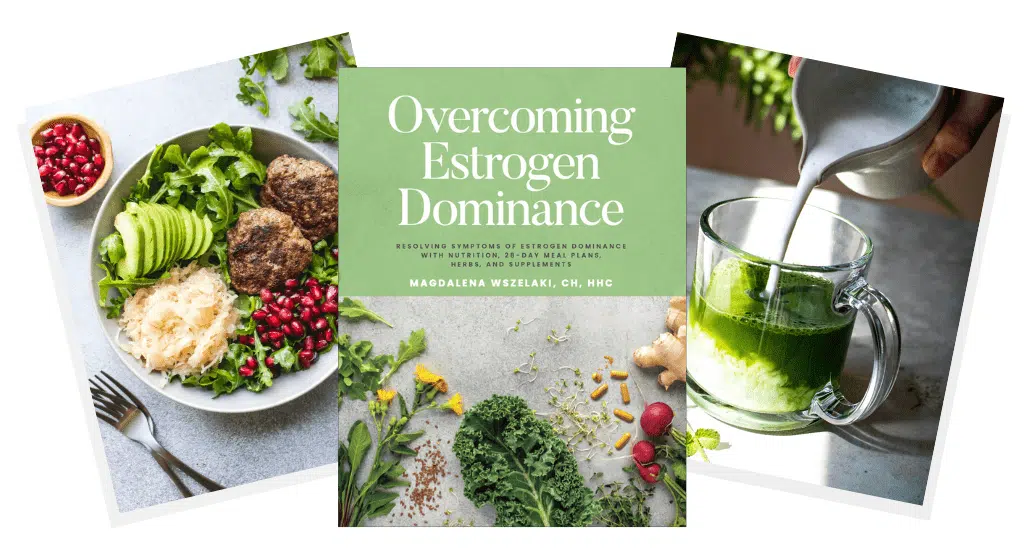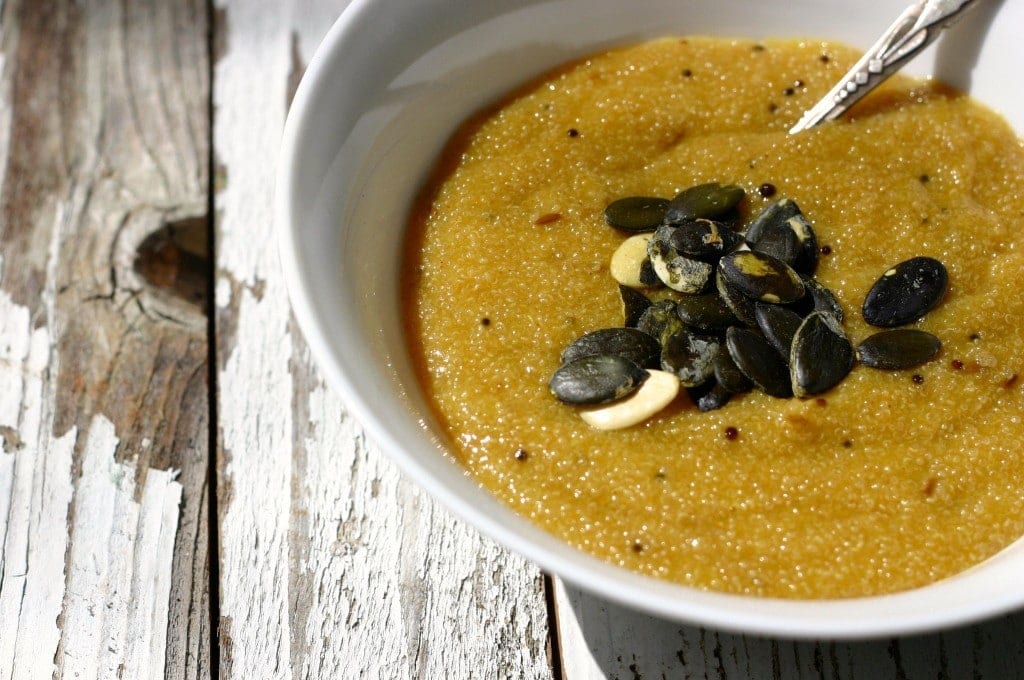You probably know by now that I’m much more in favor of savory breakfasts than sweet ones. Every time I eat something sweet for breakfast, I feel hungry by 11am and need to eat again. Many of my clients also say that savory breakfasts keep them going for much longer as their energy levels are distributed much more evenly throughout the day.
When working on developing more savory breakfast ideas that are not egg-based, I suddenly recalled a breakfast I used to enjoy a long time ago when in an ashram in India. Many mornings, we were served millet porridge that was cooked with mustard seeds, ginger, cumin, green chilies and curry leaves. It was a divine breakfast and I made it for months after coming home. I have since forgotten it. Until now!
In this recipe, I chose to use amaranth (I prefer the taste) but you can easily replace it with millet.
The yellow color of the porridge comes from turmeric – an ancient, highly anti-inflammatory, warming and healing Indian spice.
Learn how to add more hormone-balancing ingredients to your meals with our FREE 19 Estrogen Balancing Superfoods Guide here.
- 1 cup of amaranth grain
- 4 cups of filtered water
- 1 tbsp ghee
- ½ tsp cumin
- ½ tsp mustard seeds
- ½ inch fresh ginger, julienned
- ½ tsp sea salt
- ½ tsp apple cider vinegar (ACV) or lemon
- 1 tsp dry turmeric
- 1 tbsp raw unsalted butter or ghee
- a handful of raw pumpkin seeds
- Use a heavy-bottom pan to melt the ghee and add cumin, ginger and mustard seeds when hot.
- When mustard seeds start popping, add water, amaranth and salt.
- Bring to boil, then put on low-medium fire and cook covered for 25-30 minutes or until creamy and thick.
- Take off the stove and add butter (or ghee), ACV and turmeric.
- Sprinkle with pumpkin seeds.
AIP: Replace amaranth with plantain flour. Replace ghee with coconut oil. Skip the cumin and mustard seeds. Replace pumpkin seeds with 2 tbsp shredded coconut.
Low-FODMAP: Use lemon juice instead of ACV.
Low-Histamine: Replace lemon/ACV with apple juice. Replace pumpkin seeds with crushed cashews.

Learn more with Overcoming Estrogen Dominance
“The body has an amazing ability to heal. We just need to give it the right resources.”
In Overcoming Estrogen Dominance, my goal is to empower and give you the tools to take control of your hormones and health.
More than 70% of women experience estrogen dominance. The symptoms range from lumpy and fibrocystic breasts to thyroid nodules, hot flashes, fibroids, uterine polyps, painful, heavy or irregular periods to infertility and miscarriages, from mood swings to insomnia, weight gain to fatigue.
So many women have experienced the pain and frustration that comes when they feel their symptoms and complaints are dismissed or minimized. This is particularly true for women who are experiencing the symptoms of hormone imbalance. Even when doctors do offer treatment, it’s typically in the form of prescription medication or invasive surgical procedures.
In Overcoming Estrogen Dominance, I hope to show that those extreme interventions are often unnecessary, and to give women a roadmap to reverse estrogen dominance using food, herbs, supplements and natural protocols to rebalance hormones.
To get your copy of Overcoming Estrogen Dominance, go here.

I appreciate your knowledge.One question about sea salt.Fukushima accident continues to spill dirty water into the Pacific ocean and therefore sea salt is questionable.I seldom see the source of salt on any packaging except Himalayan or French grey.Thanks
Found this very interesting: http://www.wideopeneats.com/12-different-types-salt-use/ And yes, I am sticking to Himilayan from now on!
Magdalena, I would welcome your comments on gluten sensitivity and cross reactivity with amaranth. You had your own personal journey with Hashimotos and obviously you’re not concerned about amaranth. Why not?
I followed your recipe but my porridge was very watery. 4 cups of water?? Correct
I LOVE this recipe! The flavors are perfect! I found it a few years ago when trying to figure out what to do with amaranth. The sweet recipes did not appeal to me. Now amaranth is a staple for me.
What form of amaranth does this recipe call for, grains, flakes, or flour. Many of your ingredients are totally foreign to me & would appreciate clearer description.
what type of amaranth are you using? Its it the whole grain, or the flour form or something else. Thank you
Hi Melva, the recipe calls for Amaranth in grain form. Enjoy! ~HB Support